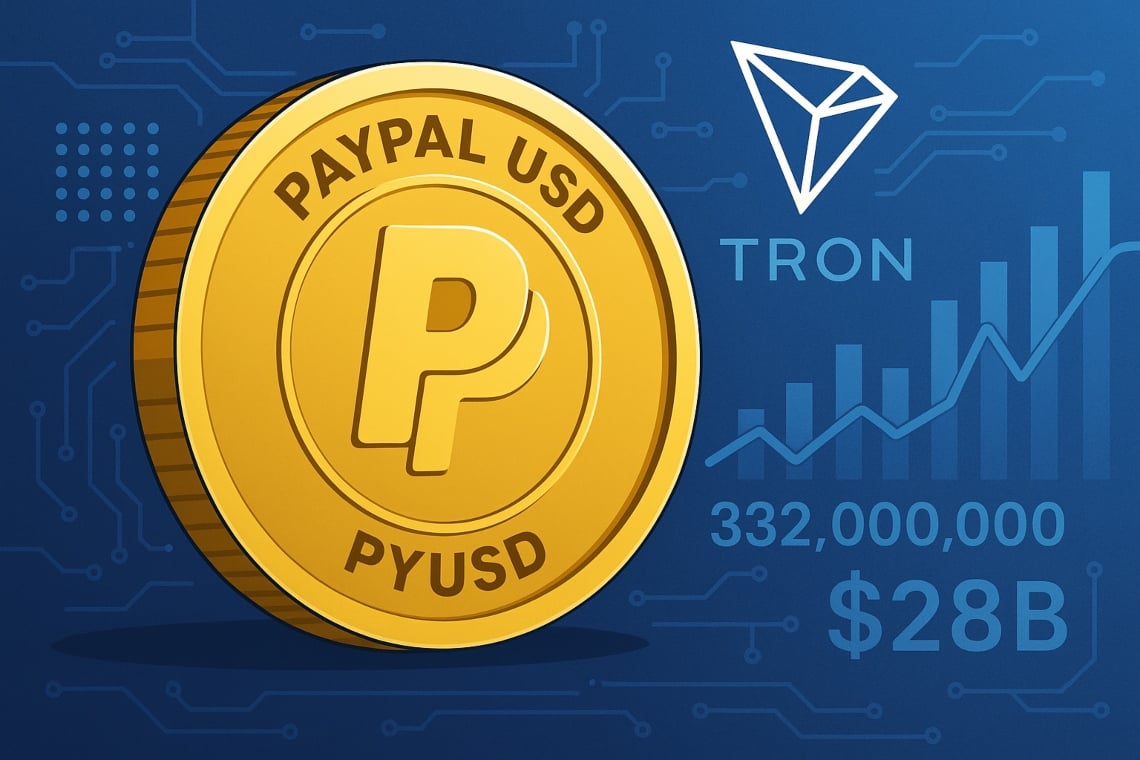I have had a bunch of these ideas kicking around in my head for years, and I’m going to start giving them out to entrepreneurs so we can get this party started in the Ternode era. If you turn my idea into a thriving company, please credit me and/or throw me a bone!
Now, for the content!
Didn’t you just write about VPN, Kurt?
Yeah, yeah yeah…
But I focused on the problems of existing Virtual Private Network (VPN), and I broke one of my key rules: I didn’t really give a great solution, and it occurred to me that the right way to fix the problem is with tokenized incentives.
In summary, Facebook’s Onavo VPN turned out to be a surveillance project, and Kape Technologies, a company with links to Israeli intelligence, bought up some of the largest VPN brands over the last few years.
Clearly, “free” privacy is a honeypot with an estimated 1.6 billion people thinking they are using the tech for privacy, which is brutal because most routes go through a handful of companies with powerful incentives to monitor traffic. It is also well known that intelligence agencies and bad actors run exit nodes on TOR and commercial VPNs, turning the last hop into a similar, but technically unrelated, trap for your privacy.
I explained it all last month, but now I have realized we need a decentralized overlay network that pays people to handle traffic honestly, gives users privacy, services customers reliably, makes metadata scarce, and scales as far as Teranode can take it.
The big idea!
The proposal is a user‑distributed VPN overlay running on BSV. Participants fall into four roles:
Users initiate sessions and pay for throughput; Relays forward encrypted packets hop by hop; Exits deliver packets to the open Internet; Auditors/Gateways validate quality of service, provide liquidity on‑ramps and optional corporate compliance. Each role is attested through Sigma Identity credentials, ensuring participants know who they are dealing with; openly or through a pseudonym.
A BSV21 token, “VPNT” (VPNT, for short), meters traffic on a per‑megabyte and per‑millisecond basis. Routes are negotiated and recorded as smart contracts on-chain via BitcoinSchema objects. Payments stream through nLocktime‑enabled channels, settle on the blockchain within minutes, and feed a reputation system that keeps good actors in the fast lane.
In short: route traffic privately, pay per use, and do it at a scale only possible on BSV.
Users would have a simple interface that allows them to toggle on their mobile device’s VPN with a connected wallet, and service providers would have a dashboard for tracking their income and network performance.
Service providers can be big corporate cloud or Internet backbone companies, or it can be normal people like you!
Back to the top ↑
Mechanisms on BSV: The overlay that pays for itself
- Identity and Reputation – Sigma: Each user, relay, exit, and auditor has a Sigma credential. Credentials can be tiered (consumer, professional, enterprise) and revoked for abuse. Session offers include the issuer’s stake and quality‑of‑service (QoS) history. Users choose paths based on these signed attestations.
- Token and Metering – 1Sat/BSV21: VPNT represents payment for throughput and latency. Users deposit a minimum session balance or have a set balance with payment credentials ready. The app will stream micropayments per MB of data and per millisecond of latency. Payment channels allow continuous spending with occasional on‑chain settlement receipts. Session channels close automatically via nLocktime if participants misbehave.
- Schemas – BitcoinSchema.org: The overlay defines standard objects using similar schemas that BSV devs will be familiar with, but with some contract-specific additions: RouteOffer describes the path, pricing, and SLA; SessionStart records deposit and route selection; QoSReport logs latency, throughput and uptime; Receipt finalises payment; SlashEvent records penalties. Using open schemas ensures any client can interact with any provider.
- Indexing and Discovery – JungleBus: JungleBus indexes on‑chain manifests and QoS records at high speed, publishes a light index on-chain, and allows clients to discover the best relays and exits, verify their history, and ensure deposits have settled. No one needs to run a full node to search for a route.
- Overlay Tunnels – BSV Overlays: Sessions build multi‑hop routes across BSV overlay networks. Path rotation and optional double‑blind settlement obscure the link between traffic and payment. Because data travels over the metanet, not the public Internet, intercepting a hop does not reveal the payload.
- Scale and Finality – Teranode: Teranode’s microservices architecture processes millions of transactions per second, so session contracts, payments, and QoS attestations do not bottleneck network throughput. Practical finality comes in less than a second, and fees are fractions of a cent, enabling true pay‑as‑you‑go.
Back to the top ↑
Economics: Pricing, payouts, and game theory
- Pricing Rails: Users see USD‑quoted rates: Payments settle in VPNT, with gateways converting from BSV, MNEE or wrapped tokens like WBTC, or USDT/C or whatever is needed.
- Provider Revenue: Relays earn per‑hop bandwidth fees and low‑latency bonuses. Exits earn a premium for taking traffic to the open Internet. Auditors receive bounties for verifying QoS reports and slashing misbehaving operators.
- Collateral and Slashing: Each role posts a stake. Failure to meet contracted QoS results in proportional slashing of that stake. Fraud or misrouting incurs a larger penalty. Stakes scale with route length and session size.
- Reputation Flow: Every QoS report is signed and stored on chain and added to an identity and connected to a reputation score. High‑uptime relays and exits move up in route selection. Inactivity causes reputation decay. Price, stake and reputation offer Sybil resistance and deter sock‑puppet nodes.
- Cashflows and Sinks: A small protocol fee (for example 5%) funds R&D, bug bounties, and security. Slashed tokens are redistributed to honest nodes. Bootstrap rewards encourage early operators until usage fees dominate.
Back to the top ↑
Privacy and threat model: Practical, paid privacy
- Transport Encryption: Each hop uses end‑to‑end encryption. Only the exit sees the destination; only the user sees the payload.
- Path Rotation and Cover Traffic: Clients can rotate paths periodically and inject cover traffic to foil correlation. The interface would allow tuning between cost, speed, reliability, and privacy.
- Coin‑Splitting: Users can split payments and routes across multiple channels, further obscuring the linkage between packets and settlement.
- Minimal Metadata: On-chain, only session payments and QoS proofs are recorded. No IP addresses or payload metadata enter the ledger.
- Abuse Controls: Exits can opt into compliance corridors, enforcing content policies and jurisdictional restrictions. Credentials are revocable if an exit is caught logging or performing man‑in‑the‑middle attacks.
Back to the top ↑
Interoperation: Abundance through the series
- MNEEgram: Our P2P liquidity network provides on‑ramps and off‑ramps for VPN sessions. Users can fund deposits via bank transfers, WeChat or stablecoins and convert to VPNT seamlessly. Exits paid in VPNT can use MNEEgram to off‑ramp into local currency.
- COMP Network: GPU‑accelerated compute from COMP Token can verify QoS proofs, aggregate signatures, and manage nLocktime scripts on behalf of mobile devices. Relays can outsource heavy cryptography to COMP providers via the same micropayment system.
- STORM Token: The storage layer from STORM Token publishes QoS reports, blacklists and signed proofs in a durable, censorship‑resistant way. Auditors can post evidence on STORM to warn others about bad actors.
Together, these systems create a vertically integrated, private Internet stack: MNEEgram moves value, COMP does heavy lifting, STORM ensures data durability, and VPNT routes traffic across the metanet.
Back to the top ↑
Why BSV is the only practical system
Micropayments require negligible fees. BSV settles transactions for fractions of a cent and supports complex scripts inside each unspent transaction output. Token issuance and transfer cost almost nothing, enabling per‑packet billing. Teranode’s microservices node architecture processes millions of transactions per second; a VPN overlay could handle global traffic without hitting a throughput ceiling. Sigma Identity anchors credentials on the chain, while BitcoinSchema ensures every session and proof has a standard form. Receipts and QoS audits live on chain as first‑class citizens, not off‑chain logs. In contrast to “free” VPNs run by intelligence‑linked firms or networks where exit nodes become targets for the NSA, this overlay pays honest operators to carry packets and punishes dishonesty at the protocol level.
The economics of BSV aligns with the economics of privacy and create a very real business opportunity for providers, and a viable commercial product for people who want to resist regional censorship or just use the Internet privately.
Back to the top ↑
Call to builders
We have the tools! Teranode for scale, BSV21 for tokens, Sigma for identity, BitcoinSchema for structure, JungleBus for indexing, and BSV overlays for routing. The mission is to stitch them into a working privacy network. Build a client that negotiates paths, streams payments, and rotates routes. Define the RouteOffer and QoSReport schemas.
Implement session channels with nLocktime. Launch auditor services that verify latency and slash bad actors. Spin up testnet relays and exits. With each line of code, we reclaim the Internet from honeypots and build an economy that pays for privacy.
Back to the top ↑
What else?
VPNT is just one more piece of the puzzle. If you have read my last few articles in this series, I hope you’re starting to see what a tremendous opportunity there is to very realistically make the Internet a better place while also being an entrepreneur in the blockchain economy.
I have one more article about Internet protocols that can be disrupted by tokenized incentives on a BSV-powered metanet, and then a few more ideas about how to tie everything back into the “real” economy of real people, and integrating it all onto the only scalable blockchain.
Stay tuned!
Back to the top ↑
Watch: New token protocol and Ordinals with Stephan February
title=”YouTube video player” frameborder=”0″ allow=”accelerometer; autoplay; clipboard-write; encrypted-media; gyroscope; picture-in-picture; web-share” referrerpolicy=”strict-origin-when-cross-origin” allowfullscreen=””>
Source: https://coingeek.com/big-ideas-series-part-5-vpn-token/


